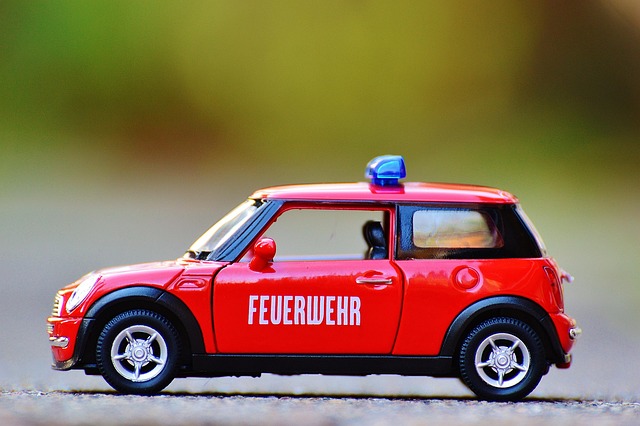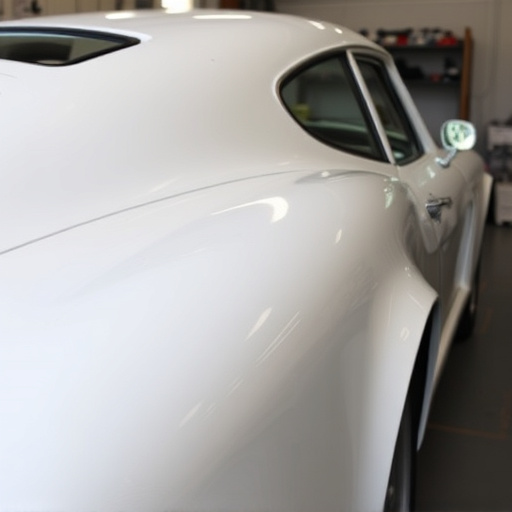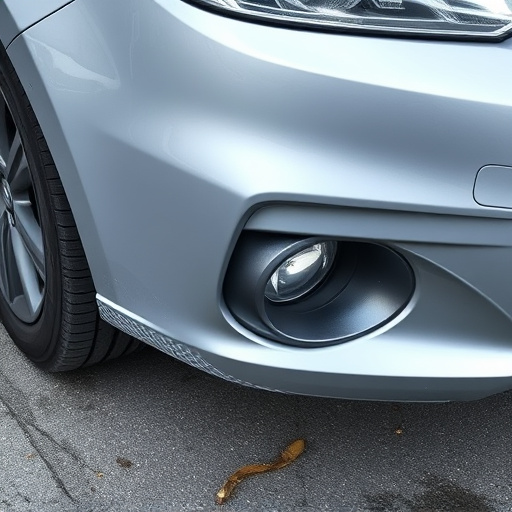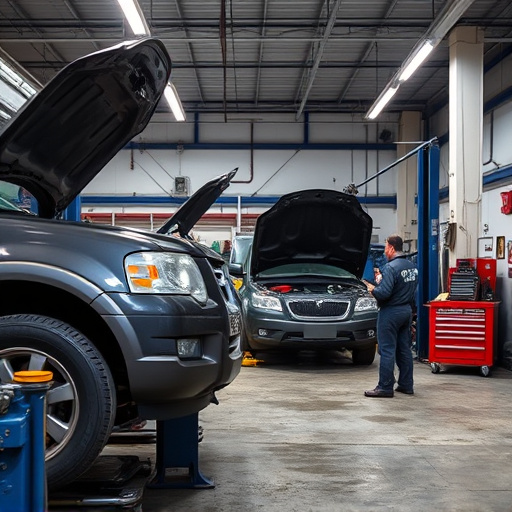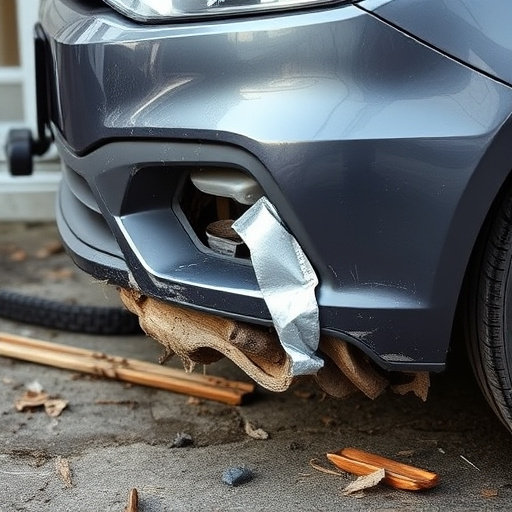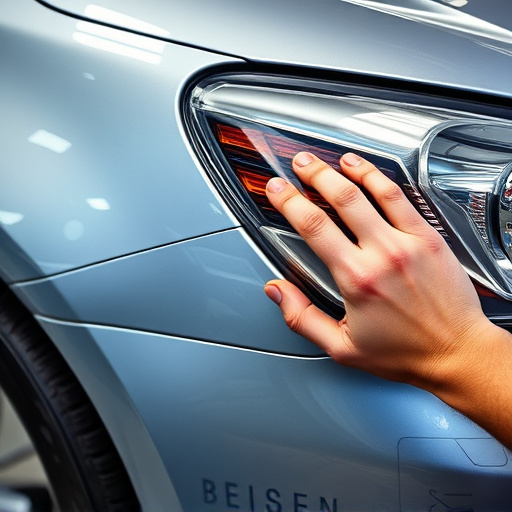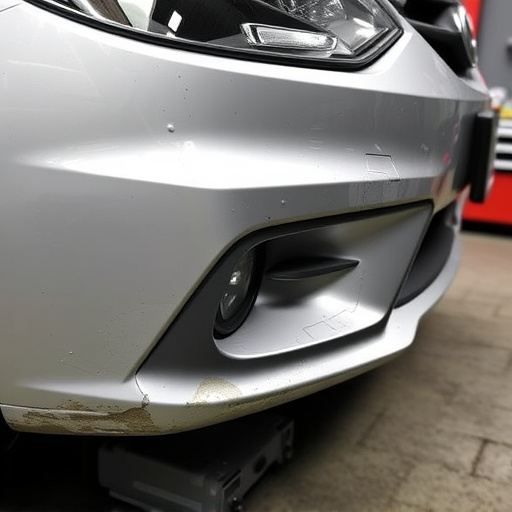Tesla's Blind Spot Monitor (BSM) relies on bumper sensors that can fail due to external factors or wear, leading to safety hazards. Fault diagnosis requires professional tools and expertise. Repair involves inspecting sensors, replacing if necessary, recalibrating, and testing functionality to preserve advanced safety features and ensure a smooth driving experience.
Struggling with a faulty Tesla Blind Spot Monitor? You’re not alone. Tesla bumper sensors, crucial for safe driving and navigation, can fail over time. This comprehensive guide dives into the world of Tesla bumper sensor repairs, equipping you with insights on understanding common failures, diagnosing issues, and a step-by-step repair process. By following these detailed instructions, you’ll regain peace of mind and enhance your Tesla’s safety features. Learn how to effectively address and resolve blind spot monitor faults through expert-level Tesla bumper sensor repair techniques.
- Understanding Tesla Bumper Sensor Failures
- Diagnosing Blind Spot Monitor Faults
- Step-by-Step Guide to Bumper Sensor Repair
Understanding Tesla Bumper Sensor Failures
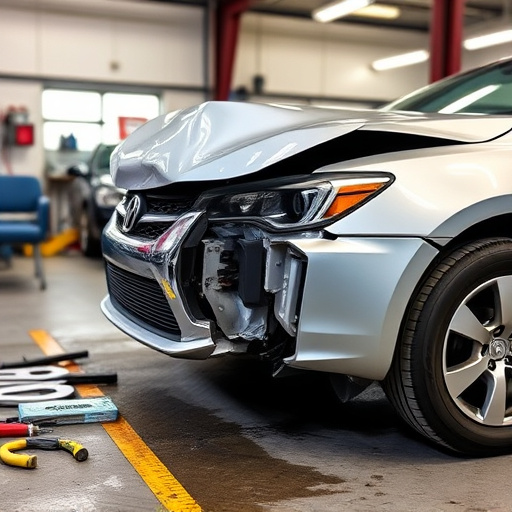
Tesla bumper sensors are integral components of the Blind Spot Monitor (BSM) system, designed to detect nearby vehicles and alert drivers of potential collisions. However, like any mechanical part, they can fail over time due to various factors such as road debris impact, extreme weather conditions, or simple wear and tear. When a Tesla bumper sensor malfunctions, it can lead to false alerts or complete silence during critical moments, posing safety risks on the road.
Identifying a faulty bumper sensor requires professional diagnosis. Many owners might notice unusual behavior like erratic warnings or no warning at all when changing lanes. A skilled technician will then employ specialized tools to test each sensor’s functionality and determine if it needs Tesla bumper sensor repair or replacement. This process is crucial for maintaining the vehicle’s safety features and ensuring a seamless driving experience.
Diagnosing Blind Spot Monitor Faults
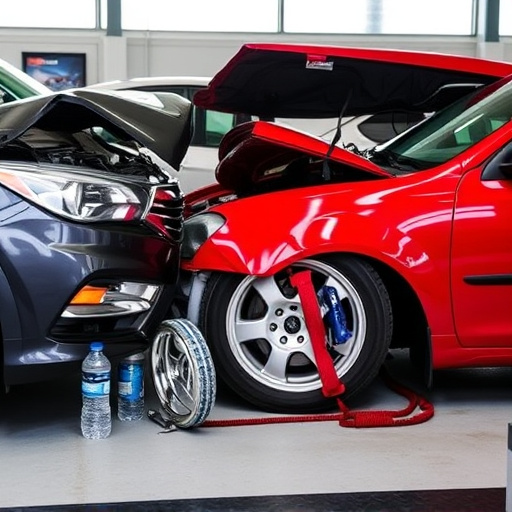
Diagnosing Blind Spot Monitor (BSM) faults in a Tesla vehicle involves a systematic approach to pinpointing the source of the issue. The first step is to inspect the bumper sensors, which are typically located on both sides of the vehicle near the rear bumpers. These sensors use ultrasonic waves or cameras to detect objects in the blind spot area. If a sensor is damaged or malfunctioning, it can cause inaccurate readings and trigger the BSM warning.
Collision repair services often recommend checking the wiring connections for any loose or corroded terminals that might interfere with sensor functionality. Additionally, examining the surrounding areas for signs of impact or damage, such as dents or scratches, can provide clues about potential causes. In some cases, a faulty sensor might require replacement, while others may need adjustment or recalibration to ensure optimal performance. Using specialized tools and diagnostic software, auto painting professionals can identify and resolve these issues effectively, ensuring the vehicle’s safety features function correctly.
Step-by-Step Guide to Bumper Sensor Repair
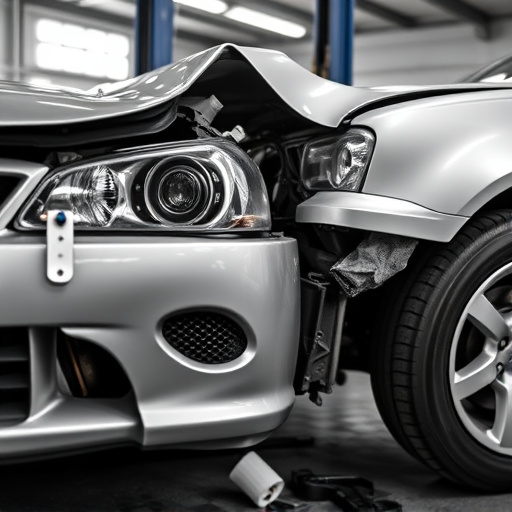
Reparing a Tesla bumper sensor for blind spot monitor faults can be accomplished with the right tools and a step-by-step approach. First, locate the sensors, typically mounted on the front and rear bumpers. These are usually small, round devices that emit and receive signals to detect nearby objects. Next, power down the vehicle and disconnect the battery to avoid any electrical shocks during the repair process. This is crucial for both your safety and the integrity of your Tesla’s electronics.
Once powered off and unplugged, you can begin the sensor replacement. Remove any debris or contaminants from the sensor area using a soft brush or compressed air. Then, carefully pop off the old sensor by gently prying it with a suitable tool, like a flathead screwdriver. After removing the faulty sensor, clean the mounting surface to ensure proper adhesion of the new one. Install the new Tesla bumper sensor, making sure it’s securely fastened. Finally, reattach any panels or covers and reconnect the battery before testing the blind spot monitor functionality to confirm the repair. Remember, professional auto body services can assist if you encounter any challenges during this process or consider it a game-changer compared to mercedes benz repair methods for similar issues.
Tesla owners experiencing blind spot monitor faults due to faulty bumper sensors can now easily resolve this issue with a straightforward repair process. By understanding common failure causes and following a step-by-step guide, you can confidently address this problem, enhancing your vehicle’s safety features and ensuring optimal performance for your Tesla. Remember, prompt action on sensor repairs is key to maintaining the reliability of your car’s advanced driver-assistance systems.

